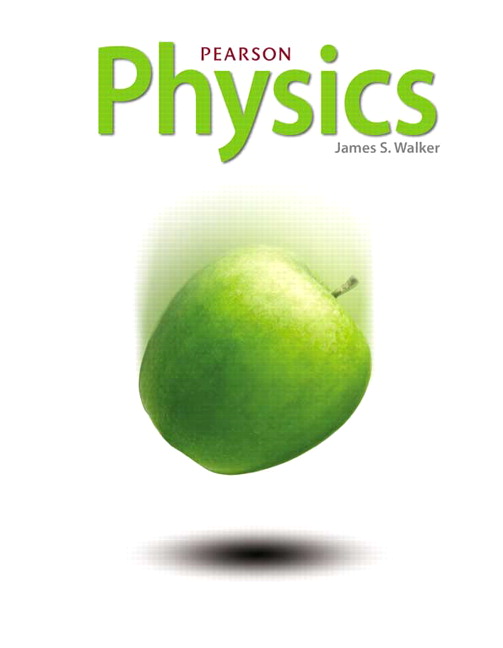
All Solutions
Page 383: Standardized Test Prep
The correct option is $c$ -thermal energy.
– The mass of our sample $m = 1text{ kg}$
– The heating rate $P = 30 ; frac{text{J}}{text{s}}$
To find the specific heat capacity of material A we need to find the total change in thermal energy.
From the graph, looking at the point $(T, t) = (25text{textdegree}text{C}, 60text{ s})$ we find the total time $t = 60text{ s}$ and change in temperature:
$$
begin{align*}
Delta T = T_{text{f}} – T_{text{i}} = 25text{textdegree}text{C} – 20text{textdegree}text{C} = 5text{textdegree}text{C}
end{align*}
$$
Now we can find the total thermal energy using the heating rate.
$$
begin{align*}
Q = P cdot t = 30 ;frac{text{J}}{text{s}} cdot 60text{ s} = 1800text{ J}
end{align*}
$$
Now we write the law that governs heating of objects:
$$
begin{equation*}
Q = m , c , Delta T
end{equation*}
$$
rearranging for $c$:
$$
begin{equation*}
c = frac{Q}{m , Delta T}
end{equation*}
$$
Plugging in the numbers we get:
$$
begin{align*}
c = frac{1800text{ J}}{1text{ kg} cdot 5text{textdegree}text{C}} = 360 ; frac{text{J}}{text{kg}text{textdegree}text{C}}
end{align*}
$$
So the final solution is (A) $360 ; frac{text{J}}{text{kg}text{textdegree}text{C}}$
The correct option is $D$.
Thus, the correct option is $C$.
Therefore, the correct option is $D$.
Where as if the cooling vent is at the top, then it will cool the air at top. Now since the cold air is heavier, the cold air will easily come down and hence it will coll the room more easily.
Haven't found what you were looking for?
Search for samples, answers to your questions and flashcards

